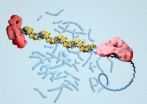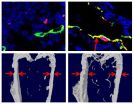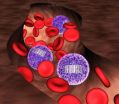Teen hormones and cellphones
Sexting leads to increased sexual behavior among teens
2014-10-06
(Press-News.org) Researchers at the University of Texas Medical Branch at Galveston say that sexting may be the new "normal" part of adolescent sexual development and is not strictly limited to at-risk teens. The findings, published in the journal Pediatrics, are from the first study on the relationship between teenage sexting, or sending sexually explicit images to another electronically, and future sexual activity.
The study results indicate that sexting may precede sexual intercourse in some cases and further cements the idea that sexting behavior is a credible sign of teenage sexual activity. Further, the researchers did not find a link between sexting and risky sexual behavior over time, which may suggest that sexting is becoming a part of growing up.
"We now know that teen sexting is fairly common," said Jeff Temple, an associate professor and psychologist at UTMB. "For instance, sexting may be associated with other typical adolescent behaviors such as substance use. Sexting is not associated with either good or poor mental well being."
"Despite this growing body of knowledge, all existing sexting research looks across samples of different groups of young people at one time, rather than following the same people over time, said Temple. "Because of this, it's unclear whether sexting comes before or after someone engages in sexual activity."
The findings detailed in this paper are part of an ongoing six-year investigation of an ethnically diverse group of adolescent students from Southeast Texas, led by Temple. The teens in the study periodically complete anonymous surveys detailing their history of sexting, sexual activity, and other behaviors throughout the six years.
Temple and a postdoctoral research fellow at UTMB, Hye Jeong Choi, examined data from the second and third years of their study to determine whether teen sexting predicted sexual activity one year later. They found that the odds of being sexually active as high school juniors was slightly higher for youth who sent a sext, or naked picture of themselves, the previous year, compared to teens who did not sext. They did not find sexting to be linked with later risky sexual behaviors.
This study is also among the first to consider the differences between actively sending a nude picture versus asking or being asked for a nude picture. They found that actually sending a sext was the important part of the link between sexting and sexual behavior, as opposed to merely asking or being asked for a nude picture.
"Being a passive recipient of or asking for a sext does not likely require the same level of comfort with one's sexuality," said Choi. "Sending a nude photo may communicate to the recipient a level of openness to sexual activity, promote a belief that sex is expected, and serve to increase sexual advances, all of which may increase the chance of future sexual behavior. Sexting may serve as a gateway behavior to actual sexual behaviors or as a way to indicate one's readiness to take intimacy to the next level."
INFORMATION:
This research was supported by the National Institutes of Health and the National Institute of Justice.
ELSE PRESS RELEASES FROM THIS DATE:
2014-10-06
We might love to reminisce and tell others about our extraordinary experiences — that time we climbed Mt. Kilimanjaro, got to taste a rare wine, or ran into a celebrity on the street — but new research suggests that sharing these extraordinary experiences may come at a social cost. The findings are published in Psychological Science, a journal of the Association for Psychological Science.
"Extraordinary experiences are pleasurable in the moment but can leave us socially worse off in the long run," says psychological scientist and study author Gus Cooney of Harvard University. ...
2014-10-06
Children's future writing difficulties can be identified before they even learn how to begin writing, according to a new study by Professor Phaedra Royle and Postdoctoral fellow Alexandra Marquis of the University of Montreal's School of Speech Language Pathology and Audiology. The researchers are interested in oral language skills and their impact on grammar and spelling learning. Their work shows that oral language is a good predictor of writing difficulties. "The more children are able to use verb tense in spoken language, the more easily they can learn written language," ...
2014-10-06
Researchers from UCL, Stanford Engineering, Google, Chalmers and Mozilla Research have built a new system that protects Internet users' privacy whilst increasing the flexibility for web developers to build web applications that combine data from different web sites, dramatically improving the safety of surfing the web.
The system, 'Confinement with Origin Web Labels,' or COWL, works with Mozilla's Firefox and the open-source version of Google's Chrome web browsers and prevents malicious code in a web site from leaking sensitive information to unauthorised parties, whilst ...
2014-10-05
Scientists have taken pictures of the BRCA2 protein for the first time, showing how it works to repair damaged DNA.
Mutations in the gene that encodes BRCA2 are well known for raising the risk of breast cancer and other cancers. Although the protein was known to be involved in DNA repair, its shape and mechanism have been unclear, making it impossible to target with therapies.
Researchers at Imperial College London and the Cancer Research UK London Research Institute purified the protein and used electron microscopy to reveal its structure and how it interacts with ...
2014-10-05
An international collaboration of scientists has identified a fifth of the genetic factors that cause height to vary between individuals.
A study which examined data on DNA from more than 250,000 people, published on October 6 in Nature Genetics, roughly doubles the number of known genome regions involved in height to more than 400. It also revealed that more than half of the factors involved in determining height are explained by simple common genetic variation - the sort of genetic variation that exists in more than 1 in 10 people.
The collaboration, co led by the ...
2014-10-05
Researchers at University of California, San Diego School of Medicine have discovered that T-cells – a type of white blood cell that learns to recognize and attack microbial pathogens – are activated by a pain receptor.
The study, reported online Oct. 5 in Nature Immunology, shows that the receptor helps regulate intestinal inflammation in mice and that its activity can be manipulated, offering a potential new target for treating certain autoimmune disorders, such as Crohn's disease and possibly multiple sclerosis.
"We have a new way to regulate T-cell activation ...
2014-10-05
Experiments in mice with a bone disorder similar to that in women after menopause show that a scientifically overlooked group of cells are likely crucial to the process of bone loss caused by the disorder, according to Johns Hopkins researchers. Their discovery, they say, not only raises the research profile of the cells, called preosteoclasts, but also explains the success and activity of an experimental osteoporosis drug with promising results in phase III clinical trials.
A summary of their work will be published on Oct. 5 in the journal Nature Medicine.
"We didn't ...
2014-10-05
The largest genome-wide association study (GWAS) to date, involving more than 300 institutions and more than 250,000 subjects, roughly doubles the number of known gene regions influencing height to more than 400. The study, from the international Genetic Investigation of Anthropometric Traits (GIANT) Consortium, provides a better glimpse at the biology of height and offers a model for investigating traits and diseases caused by many common gene changes acting together. Findings were published online October 5 by Nature Genetics.
"Height is almost completely determined ...
2014-10-05
A 7-year-project to develop a barcoding and tracking system for tissue stem cells has revealed previously unrecognized features of normal blood production: New data from Harvard Stem Cell Institute scientists at Boston Children's Hospital suggests, surprisingly, that the billions of blood cells that we produce each day are made not by blood stem cells, but rather their less pluripotent descendants, called progenitor cells. The researchers hypothesize that blood comes from stable populations of different long-lived progenitor cells that are responsible for giving rise to ...
2014-10-05
This news release is available in French and German. Physicians and researchers at CHU Sainte-Justine, Université de Montréal, CHU de Québec, Université Laval, and Hubrecht Institute have discovered a rare disease affecting both heart rate and intestinal movements. The disease, which has been named "Chronic Atrial Intestinal Dysrhythmia syndrome" (CAID), is a serious condition caused by a rare genetic mutation. This finding demonstrates that heart and guts rhythmic contractions are closely linked by a single gene in the human body, as shown in a study published on October ...
LAST 30 PRESS RELEASES:
[Press-News.org] Teen hormones and cellphones
Sexting leads to increased sexual behavior among teens



